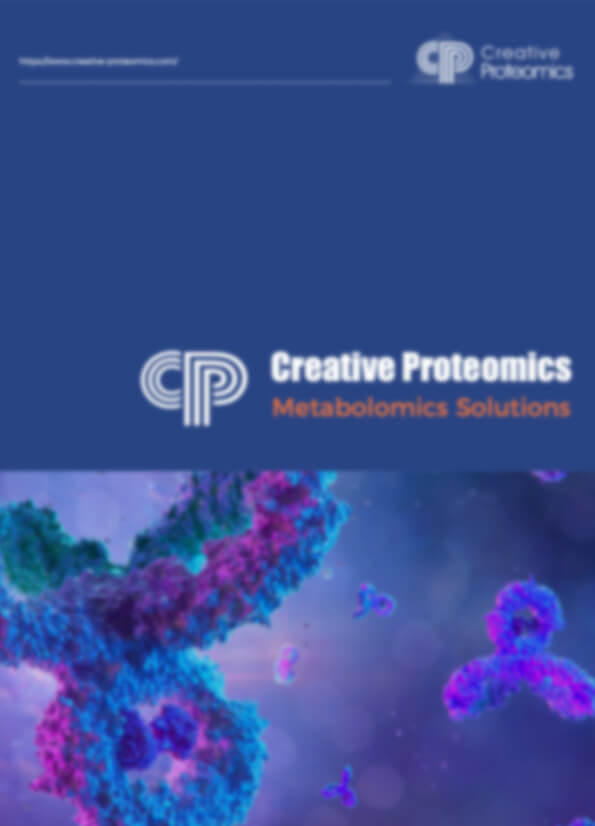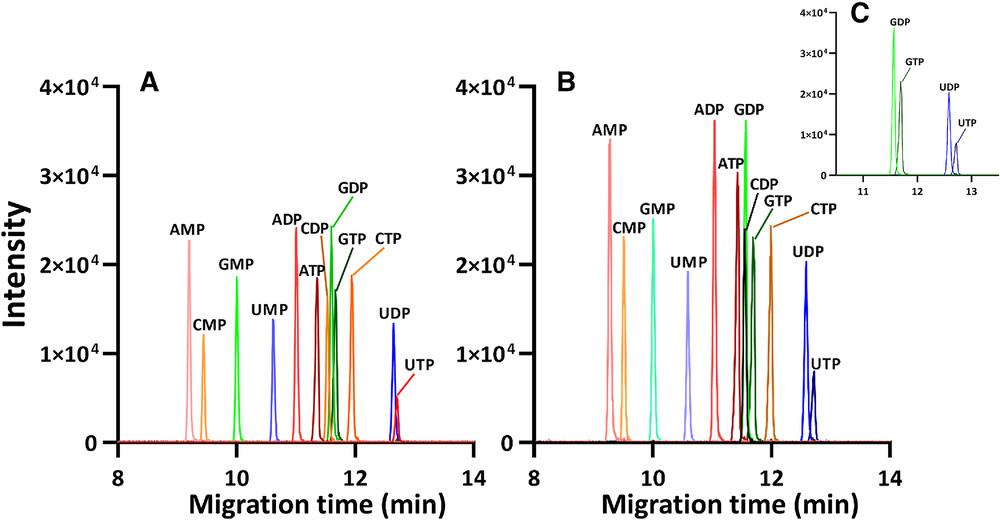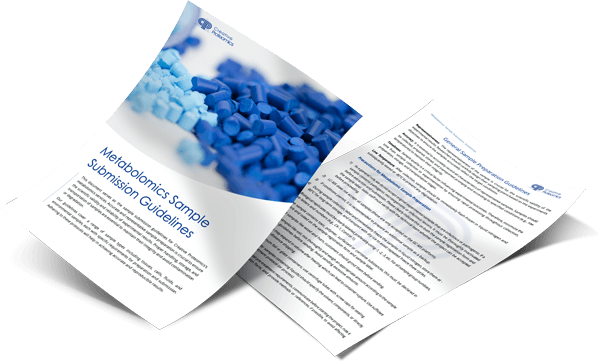Cyclic Adenosine Monophosphate (cAMP) Analysis Service
Creative Proteomics offers comprehensive cAMP analysis services, including the quantification of intracellular cAMP levels, cAMP assays in cell culture supernatants, and detection in tissue samples. We specialize in pathway activation and inhibition studies, as well as cAMP-based reporter assays to monitor real-time dynamics. Utilizing advanced technologies like HPLC and LC-MS/MS, we provide high sensitivity, accuracy, and reproducibility, enabling detailed insights into cellular signaling, metabolic regulation, and biomarker discovery.
Submit Your Request Now
×- Define
- What We Provide
- List of cAMP Metabolites
- Technology Platform
- Advantages
- Sample Requirements
- Applications
- Demo
- FAQs
- Case
- Publications
What is cAMP?
Cyclic Adenosine Monophosphate (cAMP) is a critical second messenger in cellular signaling pathways, playing a pivotal role in the regulation of numerous physiological processes. It is synthesized from adenosine triphosphate (ATP) by the enzyme adenylate cyclase, which is activated by various extracellular signals, including hormones, neurotransmitters, and growth factors. Upon its formation, cAMP activates Protein Kinase A (PKA) and other downstream effectors, initiating a cascade of intracellular signaling events.
cAMP functions in a wide range of cellular processes such as:
- Metabolic Regulation: It controls the breakdown of glycogen and lipids, as well as the regulation of glucose metabolism in response to hormones like epinephrine.
- Gene Expression: cAMP modulates the activity of transcription factors, affecting gene expression and protein synthesis.
- Cell Growth and Differentiation: It plays a role in regulating cell division, differentiation, and apoptosis (programmed cell death).
- Neurotransmission: cAMP is involved in synaptic signaling in the nervous system, influencing processes like memory formation and neuronal excitability.
Due to its involvement in diverse cellular functions, cAMP is implicated in several diseases, including cancer, diabetes, heart disease, and neurological disorders. As a result, studying cAMP signaling and measuring its levels in biological samples is crucial for understanding health and disease mechanisms.
cAMP Analysis Offered by Creative Proteomics
Our cAMP analysis services cover a wide range of applications tailored to diverse research needs. Some of the key services include:
Quantification of Intracellular cAMP Levels
We provide accurate and sensitive quantification of cAMP in various biological samples, such as cell lysates, tissue extracts, and plasma/serum samples. Using advanced analytical techniques, we can detect even trace amounts of cAMP, ensuring reliable data for your studies.
cAMP Assays in Cell Culture Supernatants
For cell-based studies, we offer cAMP assays in cell culture supernatants. This service is ideal for assessing the effects of drug treatments, hormonal stimulation, or other experimental conditions on cAMP production.
cAMP Detection in Tissue Samples
Our services include measuring cAMP levels in various tissue types (e.g., liver, brain, muscle). This service is particularly useful in the study of tissue-specific signaling pathways.
cAMP Pathway Activation and Inhibition Studies
We provide services to study how different compounds or treatments affect cAMP production and downstream signaling pathways. This is essential for understanding how pharmacological agents modulate cAMP levels.
cAMP-Based Reporter Assays
Reporter gene assays, utilizing cAMP-responsive elements, allow researchers to monitor real-time cAMP dynamics within living cells, providing dynamic insight into cellular responses.
List of cAMP Metabolites We Can Provide for Analysis
Technology Platforms for cAMP Analysis
High-Performance Liquid Chromatography (HPLC)
HPLC offers high resolution and sensitivity for the separation and quantification of cAMP in biological samples. This method is particularly useful for analyzing complex matrices and providing precise concentration data.

Agilent 1260 Infinity II (Figure from Agilent)
Liquid Chromatography-Mass Spectrometry (LC-MS/MS)
LC-MS/MS is a highly sensitive and specific technique for the quantification of cAMP in samples, capable of providing structural information that can help in distinguishing cAMP from other closely related molecules.

Thermo Scientific Q Exactive HF-X (Figure from Thermo Scientific)
Advantages of cAMP Assay
- High Sensitivity and Accuracy: cAMP metabolomics offers extremely sensitive detection, with the ability to quantify cAMP in concentrations as low as picomolar (pM) levels.
- Comprehensive Insight into Cellular Signaling: By analyzing cAMP and its metabolites, researchers can gain a deeper understanding of the entire cAMP signaling cascade, helping to elucidate complex cellular processes like gene expression, metabolic regulation, and neuronal activity.
- High Throughput Capability: Our cAMP analysis services allow for high-throughput screening of multiple samples in a short period.
- Pathway Analysis and Biomarker Discovery: cAMP metabolomics enables the identification of potential biomarkers for diseases such as cancer, diabetes, and neurological disorders, where altered cAMP signaling is often a key factor.
- Non-Invasive Sampling: Samples such as plasma, serum, or urine can be used for cAMP analysis, offering a non-invasive method for monitoring cAMP levels.
- Improved Reproducibility and Reliability: Advanced techniques like LC-MS/MS and HPLC ensure highly reproducible results with CVs (Coefficient of Variation) as low as 5%, providing researchers with confidence in the robustness of the data.
Sample Requirements for cAMP Analysis
| Sample Type | Sample Volume | Recommended Storage Conditions | Notes |
|---|---|---|---|
| Plasma/Serum | >100 µL | -80°C for long-term storage | Fresh samples preferred; avoid freeze-thaw cycles. |
| Cell Lysates | 100-200 µL | -80°C for long-term storage | Use freshly prepared cell lysates for best results. |
| Tissue Homogenates | 100-200 mg | -80°C for long-term storage | Homogenize tissues promptly and store at -80°C. |
| Cell Culture Supernatant | 200 µL | 4°C for short-term, -80°C for long-term | Avoid contamination by using sterile conditions. |
| Urine | 200-500 µL | -80°C for long-term storage | Samples should be collected in sterile containers. |
| Cerebrospinal Fluid (CSF) | 200 µL | -80°C for long-term storage | Handle with care; follow institutional guidelines for CSF collection. |
Applications of cAMP Assay Service
- Drug Screening: Identify compounds that modulate cAMP signaling pathways, including agonists, antagonists, and modulators.
- Pharmacological Profiling: Perform dose-response studies and determine IC50 values to evaluate drug efficacy and selectivity.
- Signal Transduction Studies: Investigate how cAMP regulates key processes such as metabolism, gene expression, and cell growth.
- Endocrine Research: Assess cAMP's role in hormonal regulation of cellular processes and metabolic pathways.
- Neuroscience: Study the influence of cAMP on neurotransmitter signaling and synaptic plasticity.
- Cancer Research: Explore how cAMP affects cell proliferation and apoptosis, and its role in cellular differentiation.
- Metabolic Research: Investigate cAMP's regulation of glucose metabolism, lipid metabolism, and insulin signaling.
- Immunology: Analyze cAMP's effect on immune cell activation, immune responses, and signaling.
- Stem Cell Research: Study how cAMP regulates stem cell differentiation and proliferation in tissue regeneration.
- Cardiovascular Research: Investigate cAMP's role in regulating cardiac contractility and vascular tone.
Demo

Representative chromatograms of a blank injection of aCSF (A, D), a standard solution containing 10 nM of cAMP and cGMP (B, E) and a mouse CSF sample (C, F). (Öckl, et al., Universität Ulm, 2013).
FAQ of cAMP Analysis
Can I analyze cAMP in both cell culture and animal models?
Yes, we offer cAMP analysis for both in vitro cell culture models and in vivo animal tissue samples. For cell culture studies, we can analyze cAMP levels in supernatants to assess the impact of treatments or stimuli on cAMP production. For animal models, we measure cAMP in various tissues, such as brain, liver, and muscle, to understand tissue-specific signaling responses.
What is the detection limit of cAMP in your assays?
Our cAMP analysis services are highly sensitive, with the ability to detect cAMP at picomolar (pM) concentrations. The detection limits depend on the specific technique used—HPLC and LC-MS/MS methods ensure excellent sensitivity and accuracy, even for low-concentration samples.
Can cAMP levels be influenced by factors such as temperature or time of sample collection?
Yes, various factors such as temperature, time of day, and the duration of sample storage can influence cAMP levels. To minimize variability, it is recommended to process and store samples as quickly as possible after collection. Circadian rhythms and metabolic conditions may also affect cAMP levels in biological fluids, so it's important to consider these factors when planning your study.
How do I send my samples for cAMP analysis?
Samples should be properly labeled and packaged to ensure safe transport to our lab. We recommend using dry ice or liquid nitrogen for shipping frozen samples to maintain the integrity of cAMP levels during transit. If you are unsure of how to prepare or send your samples, please contact us for detailed instructions.
Learn about other Q&A.
cAMP Analysis Case Study
Publications
Here are some publications in Metabolomics research from our clients:

- Plant Growth Promotion, Phytohormone Production and Genomics of the Rhizosphere-Associated Microalga, Micractinium rhizosphaerae sp. 2023. https://doi.org/10.3390/plants12030651
- Inflammation primes the kidney for recovery by activating AZIN1 A-to-I editing. 2023. https://doi.org/10.1101/2023.11.09.566426
- Quantifying forms and functions of intestinal bile acid pools in mice. 2024. https://doi.org/10.1101/2024.02.16.580658
- Bacterial–fungal interactions revealed by genome-wide analysis of bacterial mutant fitness. 2021. https://doi.org/10.1038/s41564-020-00800-z
- NUDT22 promotes cancer growth through pyrimidine salvage and the TCA cycle. 2022. https://doi.org/10.21203/rs.3.rs-1491465/v1









